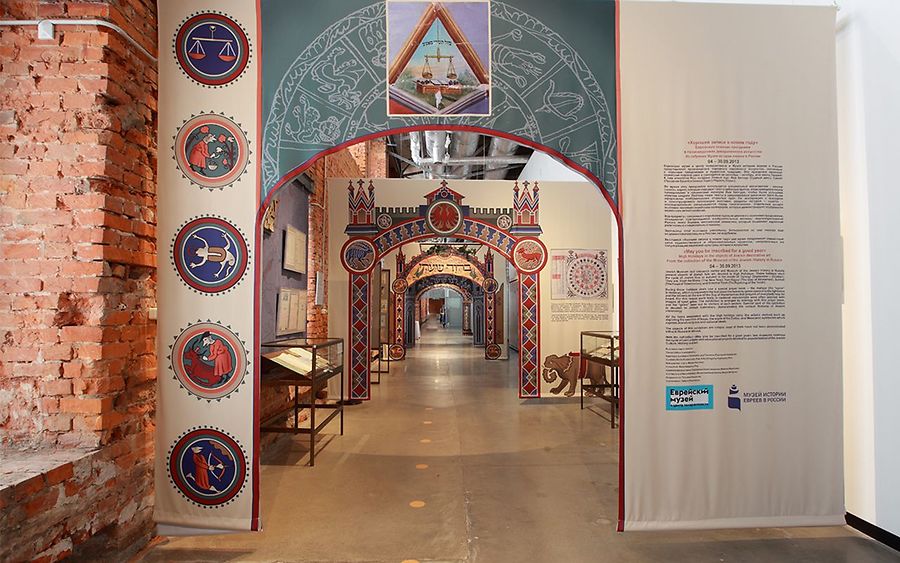


‘May You Be Inscribed for a Good Year’: The High Holidays in Objects of Jewish Decorative Art, from the Collection of the Museum of Jewish History in Russia
The Museum of Jewish History in Russia presents works of Jewish folk art connected to the autumnal High Holidays of the Jewish calendar year. These holidays commence the annual cycle and take place in September or October – the Jewish calendar month of Tishrei. The High Holidays comprise Rosh Hashanah (the New Year), Yom Kippur (the Day of Atonement), Sukkot (the Feast of Tabernacles) and Simchat Torah (Rejoicing in the Torah).
The exhibition has been designed according to associations with a special prayer book, the ‘machzor’ (‘cycle’ in Hebrew), which is used in Jewish liturgy during this time and contains prayers for Rosh Hashanah and Yom Kippur. The sections of the exhibition correspond to the pages of the machzor and expose the visitor to the accompanying traditions of the main Jewish holidays.
In the period leading up to Rosh Hashanah, new yearly calendars marking the holidays and denoting candle-lighting times for Shabbat are printed. Jewish calendars are often decorated with whimsical ornamentation and depictions of animals. They can also contain ancient astronomical diagrams and charts of the moon’s phases.
Foldable keepsakes made of paper – three-dimensional cards – became popular in the late 19th and early 20th century. At the High Holidays people commonly gave them to friends and relatives, whether close or distant, just like regular cards. These foldout items, finely and delicately constructed from a variety of materials, expressed holiday greetings and wishes for well-being and ‘inscription in the book of life’ for the new year.
A separate group of items on display – notably folk art with depictions of the sacrifice or ‘binding’ of Isaac – relates to the Day of Atonement. The same theme also appears on belt buckles for the ‘kittel’, a white ceremonial robe used during prayer in the synagogue on Yom Kippur.
Yom Kippur is followed by the holiday of the new harvest, Sukkot, which lasts for seven days. A temporary dwelling, called a ‘booth’ or ‘tabernacle’ (‘sukkah’ in Hebrew) is built prior to the holiday and serves as a reminder of the exodus from Egypt, when the Jewish people lived in the desert. The sukkah is decorated with fruits and pictures specifically designed to correspond with the themes of this holiday.
The final autumnal holiday, Simchat Torah, concludes the annual cycle of reading the Torah (Pentateuch) in the synagogue. On this day children bring colourful flags decorated with drawings and images to the synagogue and sing and dance with them, imitating the celebrations of the adults. Several of the flags included in the present exhibition date from more than a century ago and have miraculously survived to this day.
All the objects in the exhibition are unique, and the majority have never before been on display either in Russia or abroad.
The exhibition ‘May You Be Inscribed for a Good Year’ represents a continuation of the joint artistic and educational projects of the Museum of Jewish History in Russia and the Jewish Museum and Tolerance Centre, which aim to popularize Jewish culture, history, and art.

